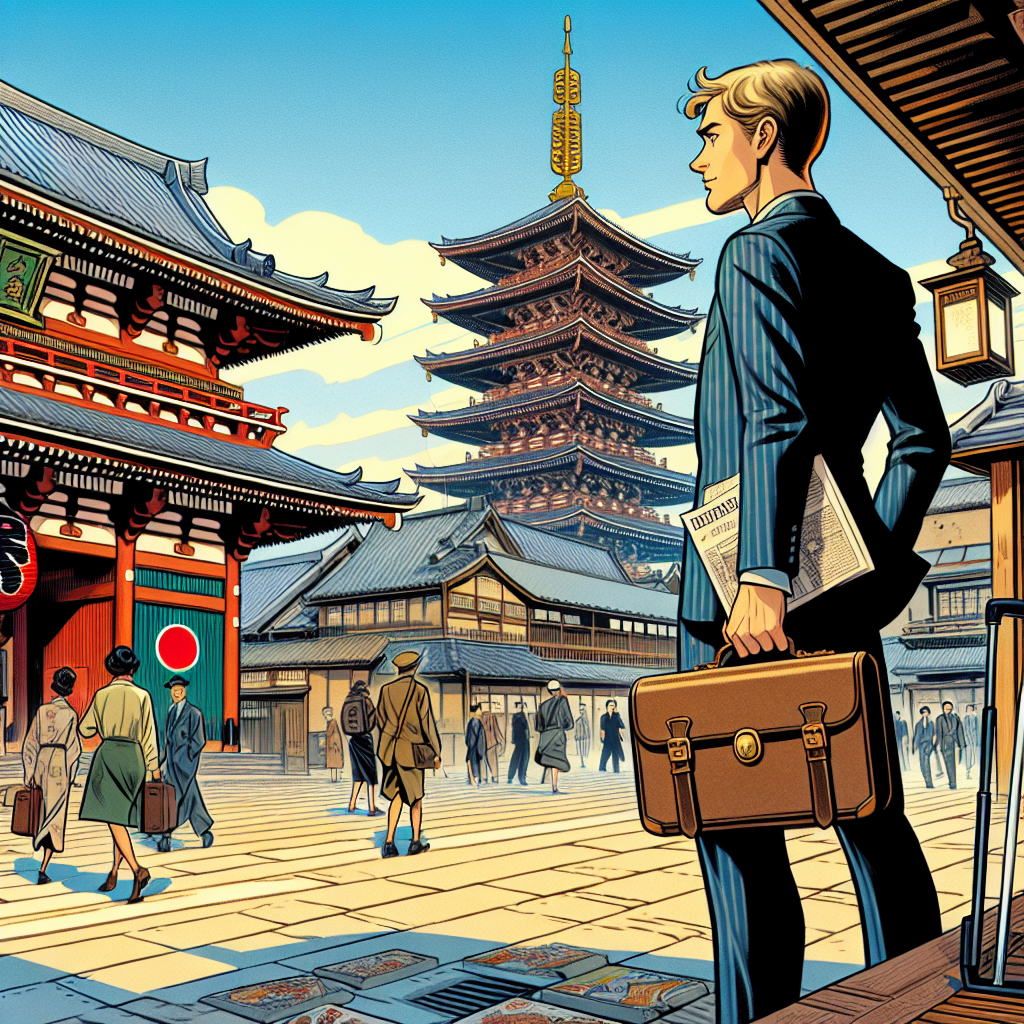Travel notes
Chapter 3: Traditions Amidst the Towering Modernity: The Temples of Asakusa
The morning air in Tokyo carried a refreshing chill as I set out for Asakusa, a district renowned for its historic temples and the preservation of traditional Japanese culture amidst the city’s modern landscape. Today’s expedition promised a journey back in time, offering a glimpse into the spiritual heart of Tokyo.
My first destination was Senso-ji, Asakusa’s ancient Buddhist temple, a beacon of tranquility and devotion amidst the urban sprawl. As I approached the towering Kaminarimon, or ‘Thunder Gate’, the vibrant colors and the giant lantern hanging at its center commanded my attention, symbolizing the entrance to a world apart from the bustling city life.
Passing through the gate, I was greeted by Nakamise Street, lined with stalls selling traditional crafts, snacks, and souvenirs. The lively chatter of vendors and the aroma of street food filled the air, creating a vibrant atmosphere that led the way to the temple’s second gate, the Hozomon.
The Senso-ji temple grounds were a spectacle of historical beauty and spiritual significance. The main hall, with its intricate architecture and serene ambiance, offered a moment of reflection on the enduring nature of tradition in the face of modernity. I was moved by the sight of devotees and tourists alike, drawn together in a shared reverence for this sacred site.
Exploring the temple’s surroundings, I discovered the Asakusa Shrine, also known as Sanja-sama, dedicated to the three men who founded Senso-ji. The shrine’s presence alongside the temple served as a reminder of the harmonious coexistence of Shinto and Buddhist practices in Japan. The peaceful gardens, koi ponds, and smaller temples and shrines scattered throughout the area provided a serene escape, inviting moments of quiet contemplation.
As the afternoon sun began to wane, I found myself wandering towards the Sumida River. The contrast between the ancient temples and the modern skyline across the river was striking, embodying Tokyo’s unique blend of the past and present. The sight of the Tokyo Skytree towering in the distance was a powerful reminder of the city’s continuous evolution.
Today’s exploration of Asakusa has been a profound journey through Tokyo’s cultural heritage, highlighting the delicate balance between maintaining tradition and embracing progress. The temples of Asakusa stand as testaments to the city’s deep respect for its historical roots, even as it reaches towards the future.
As I return to the hustle and bustle of modern Tokyo, the experiences of today linger in my mind, enriching my diplomatic mission with a deeper understanding of Japan’s cultural complexity and the enduring spirit of its people.
Travel notes:
📍 Location: Asakusa, Tokyo, Japan
🚇 Getting There: Asakusa is accessible via the Tokyo Metro Ginza Line, Toei Asakusa Line, and Tobu Skytree Line. The nearest station is Asakusa Station.
🏯 Key Landmarks:
1. Senso-ji Temple
– Entrance: Free 🎟️
– Features the iconic Kaminarimon (‘Thunder Gate’), Nakamise Street for traditional shopping, and the Hozomon Gate.
– Location: Just a few minutes’ walk from Asakusa Station.
2. Asakusa Shrine
– Entrance: Free 🎟️
– Located right next to Senso-ji Temple, dedicated to the founders of Senso-ji.
3. Sumida River
– Offers beautiful views of the Tokyo Skytree and a contrast of Tokyo’s skyline.
🍜 Eating: Nakamise Street offers a variety of traditional snacks and street food, providing a taste of local flavors.
💡 Tips:
– Early morning or late afternoon visits to Senso-ji Temple are recommended to avoid crowds.
– Explore the smaller temples and gardens around Senso-ji for a peaceful experience.
– A walk along the Sumida River at sunset offers stunning views of the Tokyo Skytree.

